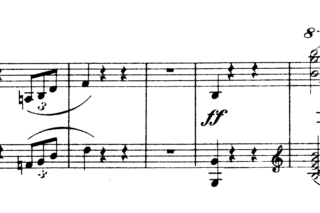

And it is hard to believe that the note should be played as a staccato eighth note (=16th note) in such a fast tempo, breaking up the opening melody with a large gap.Ĭhopin had a habit of making corrections in the middle of pieces that he expected to be applied retroactively, and his copyists tended to copy his autographs slavishly without making these corrections. The staccato dot makes much more sense over the first note as a quarter note, rather than as an eighth note, since the eighth note-eight rest combination already represents a written-out staccato. Obscuring this relationship by varying such an essential part of the motive, its rhythm, seems highly unlikely.Ģ. It occurs over and over throughout the piece and also at the very end in displaced form, Chopin’s usual referring back to important motives at the end of his pieces. The descending scale in a dotted rhythm is a motive that is used to link the opening octave music with the chorale sections. 3, I think that it is most likely that he intended the dotted rhythm (staccato quarter note-eighth rest-eighth note-quarter note) throughout, as Mikuli and practically everyone else has found most natural.ġ. In the case of the famous rhythmic issue in the Scherzo no. I would like to single out here only one example, since it best illustrates the “confusion” and is also quite prominent:Īlong with filiation, one must also consider musical factors in dealing with a composer like Chopin who was so indifferent to proofreading that he often didn’t bother to mark corrections of printed wrong notes and rhythms in his student’s copies. The only way out is to have a detailed footnoting apparatus that indicates differing readings and explains them to the player. This source evaluation has, of course, problems, for also “final” changes made by Chopin in F F have to be documented somehow.

So, although C does not represent the final version, it is the “best” source and was consequently the main source for my edition. It nevertheless shows an earlier and “worse” text state than C.

I must therefore draw the following conclusions: F F is in fact the final definitive edition, thus the source corrected last by Chopin. Chopin did very carefully correct the copy C, on the other hand. Much is incompletely notated (dynamics are often lacking), and everything suggests that Chopin wanted to add these things then in the galley proofs for F F (which was done only to a very limited extent). What can’t be seen from this schematic presentation are the following observations: Autograph A exhibits many signs that Chopin was still not entirely “finished” with the notation. This interrelationship amongst sources can best be captured in a stemma: Before the French edition appeared, however, Chopin read two sets of galley proofs the state of the text after the 1 st proofreading became the model for the English first edition (F E). The autograph was used as engraver’s model for the French first edition (F F), the copy, for the German first edition (F G). No autograph is extant for the b-minor Scherzo, whereas for the 2 nd Scherzo we have both an autograph (A) as well as also a copy (C), checked through by Chopin. The source material, or so at least it is my impression, gets a bit more complicated with every scherzo.
CHOPIN SCHERZO 2 DIFFICULTY UPDATE
So, it makes sense to update my report from the Chopin workshop and to highlight a few problems in these editions. 39, are just now appearing in my new edition. In the meantime, casually expressed, another 2 Scherzi later, 2 Scherzi more mature – and clearly even more confused, alas. In my blog post of 21 March 2016, I lamented the existing “confusion” concerning the tied notes in Chopin’s 1 st Scherzo.


 0 kommentar(er)
0 kommentar(er)
